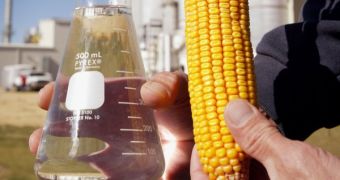The search for viable biofuels is well on its way, as more and more car manufacturers are presenting concepts and prototypes of "green cars" that use alternative fuel sources. Making cellulosic ethanol seems to be a good idea. Making cars run on this fuel instead of the polluting fossilized fuel is an even better one.
Breaking down cellulose is the most difficult part of making ethanol from plant biomass, and until now, there were no simple and efficient methods of doing that.
Now, chemical engineers Richard D. Offeman and George H. Robertson at the ARS Western Regional Research Center in Albany, California, created a new device that could reduce the amounts of energy required by ethanol producing processes.
This agency is the U.S. Department of Agriculture's chief scientific research agency, with a long experience in making ethanol from biomass, like the leaves, stalks, trunks and stems of trees, that are usually leftovers after the harvest.
Their technique uses a series of specially designed permeable plastic sheets, or membranes, and it's designed to produce ethanol, a good fuel for cars and industrial vehicles, from fermented broths of corn, or straw, grass, wood, wheat and rice straw.
The invention was called a "spiral-wound liquid membrane module" and could make the presently used process of distilling ethanol from fermentation broth obsolete. It only relies on two separation processes, extraction and membrane permeation, concentrated in only one piece of equipment.
The inventors hope that future developments of this technique could boost practical applications and eventually replace distillation, the second most costly part of the ethanol production processes. It could also have other uses, like cleaning up wastewater or chemically treating methane gas for household use.
In the United States today, fuel ethanol is derived from corn, which is available in limited quantities and consumes substantial amounts of fossil energy.

 14 DAY TRIAL //
14 DAY TRIAL //